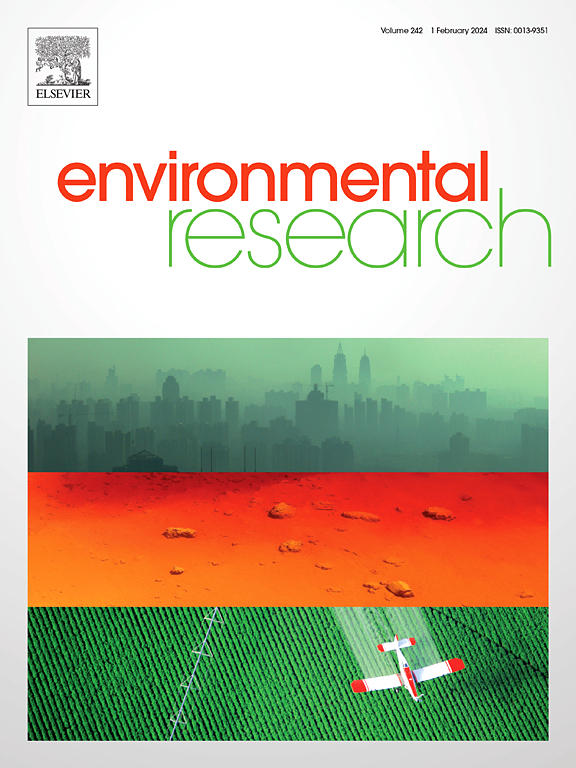毛竹入侵介导的微生物群落变化带来的公共卫生风险升高。
IF 7.7
2区 环境科学与生态学
Q1 ENVIRONMENTAL SCIENCES
引用次数: 0
摘要
毛竹的入侵显著改变了地上植被,但其对土壤微生物群落和相关生态功能的影响尚不清楚。为了解决这一知识差距,我们在24个地点进行了全面的调查,这些地点跨越了不同的入侵梯度(未入侵、半入侵、完全入侵),沿着包括山区、农村、郊区和城市栖息地的城市化样带。我们的研究结果表明,竹入侵加强了控制微生物群落组装的确定性过程。与细菌相比,真菌群落表现出更强的确定性组装模式,并作为入侵阶段更可靠的生物指标,通过随机森林模型进行评估。值得注意的是,毛竹的存在与土壤中抗生素抗性基因(ARGs)和毒力因子(VFs)浓度升高相关。农村地区表现出非典型趋势,可能是由于固有的高基线ARGs和VFs水平。结构方程模型表明,竹林入侵引起土壤理化性质的改变,进而驱动微生物类群对ARGs/ vfs的确定性选择,包括潜在的人类病原体。从本质上讲,恢复竹为主的生态系统有效地减少了这些抗性和毒力元素的丰度。共生网络分析进一步确定了具有病原体裂解能力的微生物类群,强调了入侵土壤中的自然生物控制机制。该研究加深了对毛竹入侵如何重塑土壤微生物群及其功能特征的理解,为减轻与入侵植物动力学相关的生态风险提供了可行的见解。本文章由计算机程序翻译,如有差异,请以英文原文为准。

Elevated public health risks from changes in microbial communities mediated by moso bamboo invasion
The invasion of moso bamboo significantly alters aboveground vegetation, yet its impact on soil microbial communities and associated ecological functions remains under-explored. To address this knowledge gap, we conducted a comprehensive survey across 24 sites spanning varying invasion gradients (non-invaded, half-invaded, fully-invaded) along an urbanization transect encompassing mountain, rural, suburban, and urban habitats. Our results reveal that bamboo invasion strengthens deterministic processes governing microbial community assembly. Fungal communities demonstrated stronger deterministic assembly patterns compared to bacteria and served as more reliable bio-indicators of invasion stages, as assessed via random forest modeling. Notably, moso bamboo presence correlated with elevated soil concentrations of antibiotic resistance genes (ARGs) and virulence factors (VFs). Rural sites exhibited atypical trends, potentially due to intrinsically high baseline levels of ARGs and VFs. Structural equation modeling clarified that bamboo invasion induces shifts in soil physicochemical properties, which in turn drive deterministic selection of microbial taxa harboring ARGs/VFs-including potential human pathogens. Essentially, restoration of bamboo-dominated ecosystems effectively reduced the abundance of these resistance and virulence elements. Co-occurrence network analyses further identified microbial taxa with pathogen-lysis capabilities, highlighting natural biological control mechanisms within invaded soils. This study deepens understanding of how moso bamboo invasion remodels soil microbiomes and their functional profiles, providing actionable insights for mitigating ecological risks linked to invasive plant dynamics.
求助全文
通过发布文献求助,成功后即可免费获取论文全文。
去求助
来源期刊

Environmental Research
环境科学-公共卫生、环境卫生与职业卫生
CiteScore
12.60
自引率
8.40%
发文量
2480
审稿时长
4.7 months
期刊介绍:
The Environmental Research journal presents a broad range of interdisciplinary research, focused on addressing worldwide environmental concerns and featuring innovative findings. Our publication strives to explore relevant anthropogenic issues across various environmental sectors, showcasing practical applications in real-life settings.
 求助内容:
求助内容: 应助结果提醒方式:
应助结果提醒方式:


